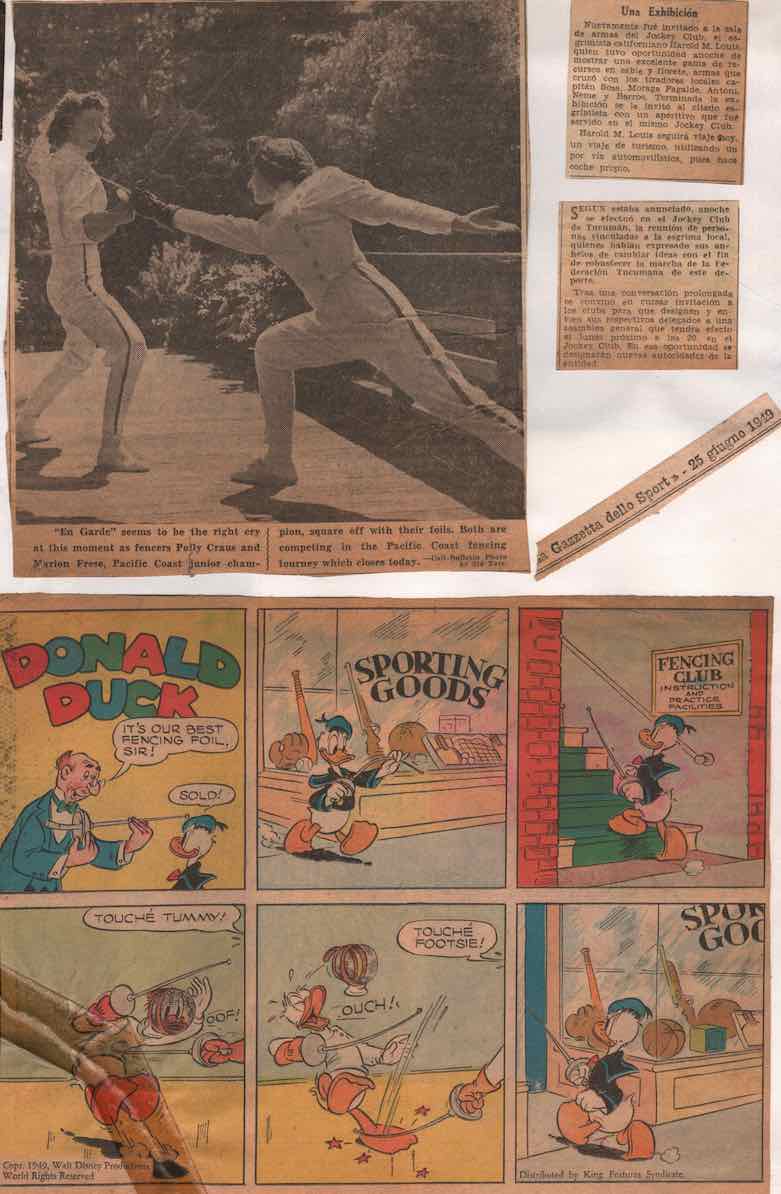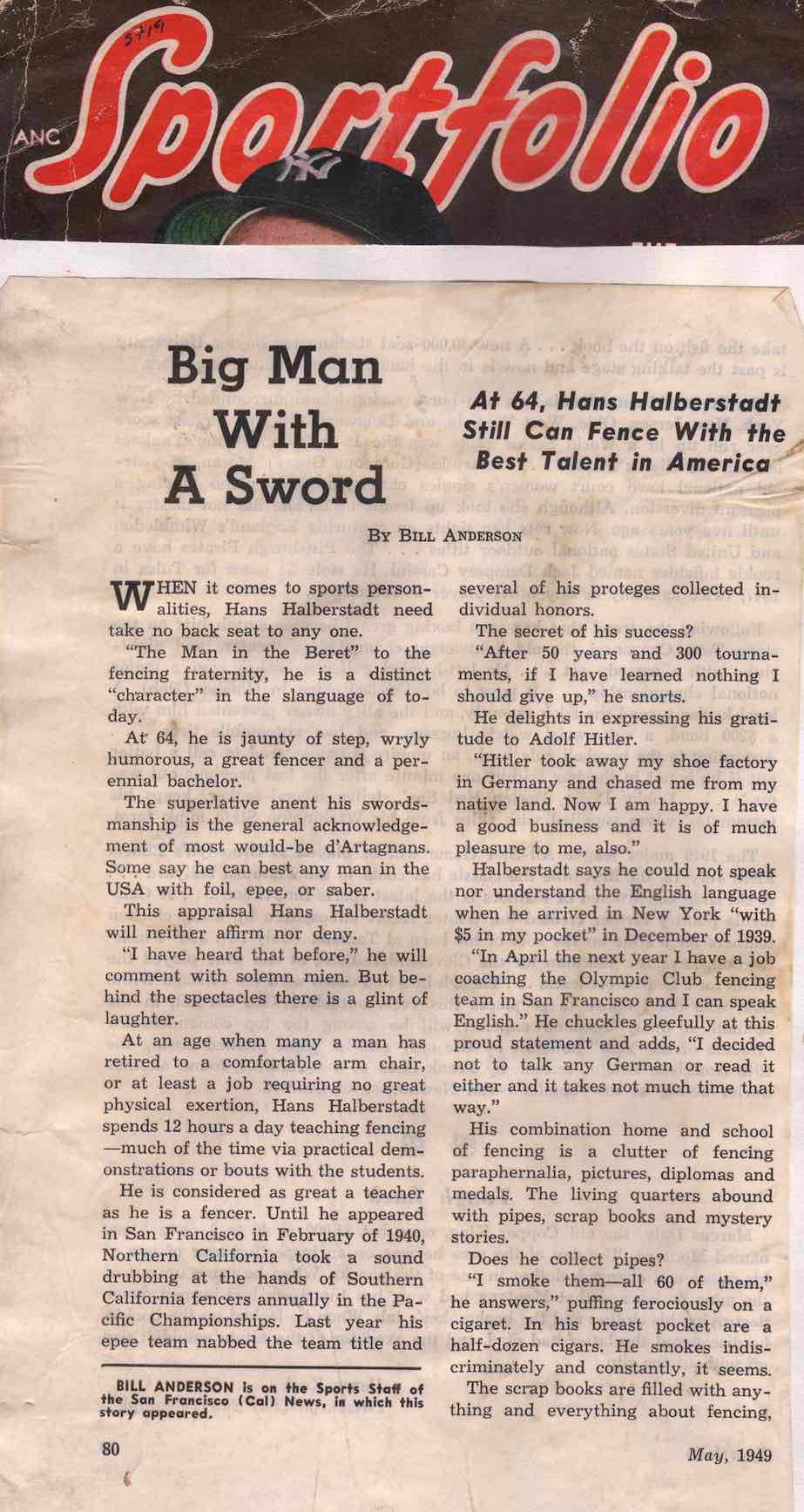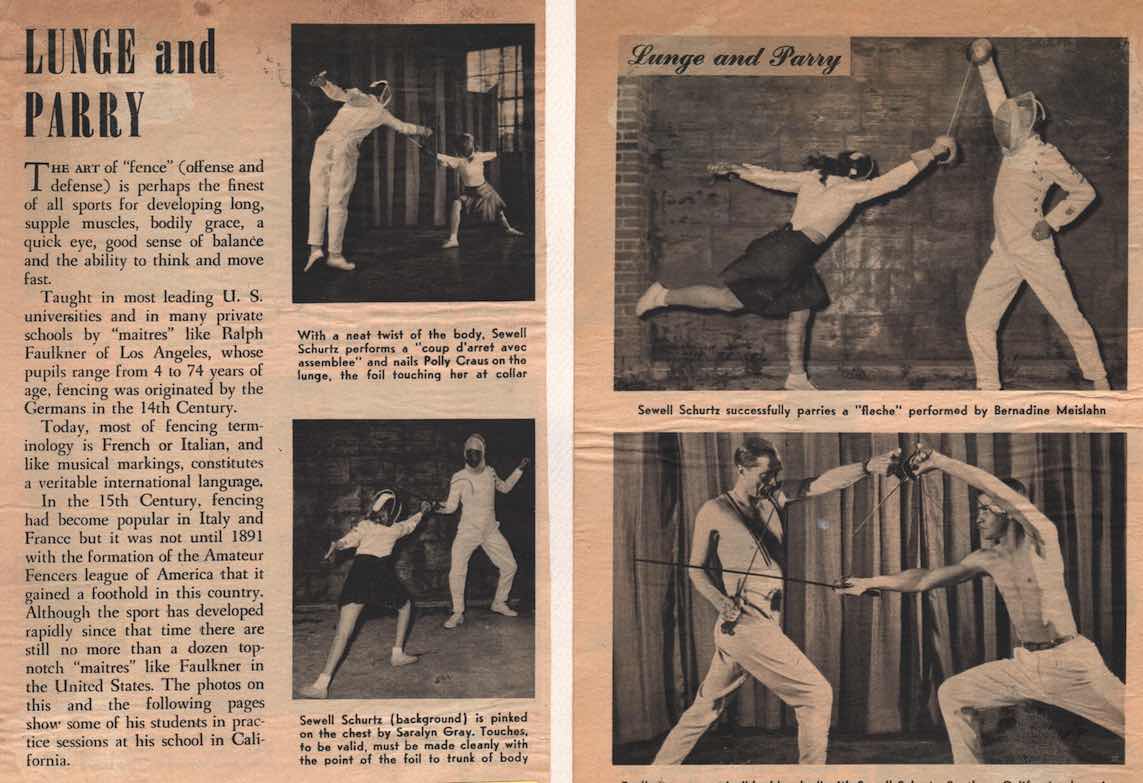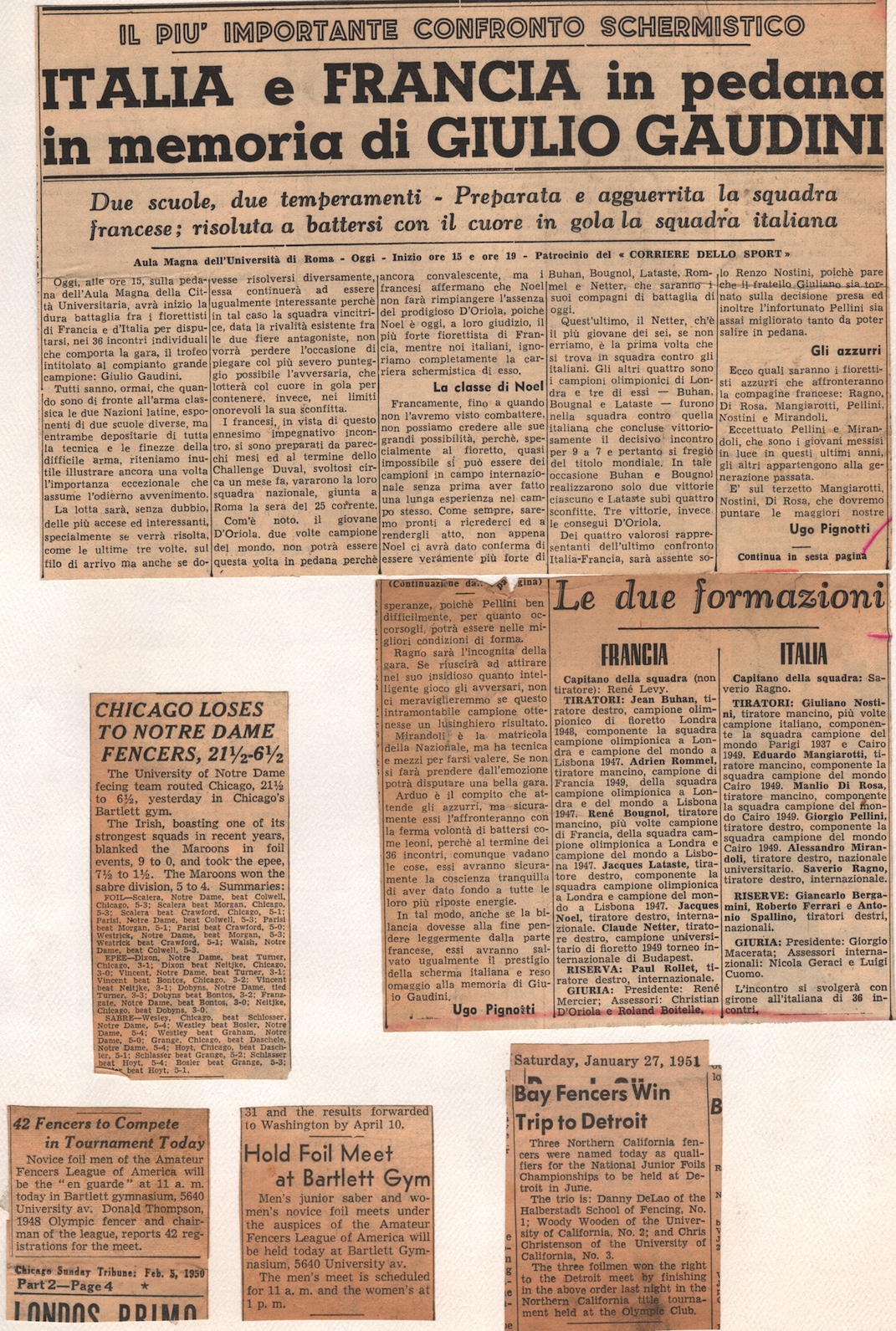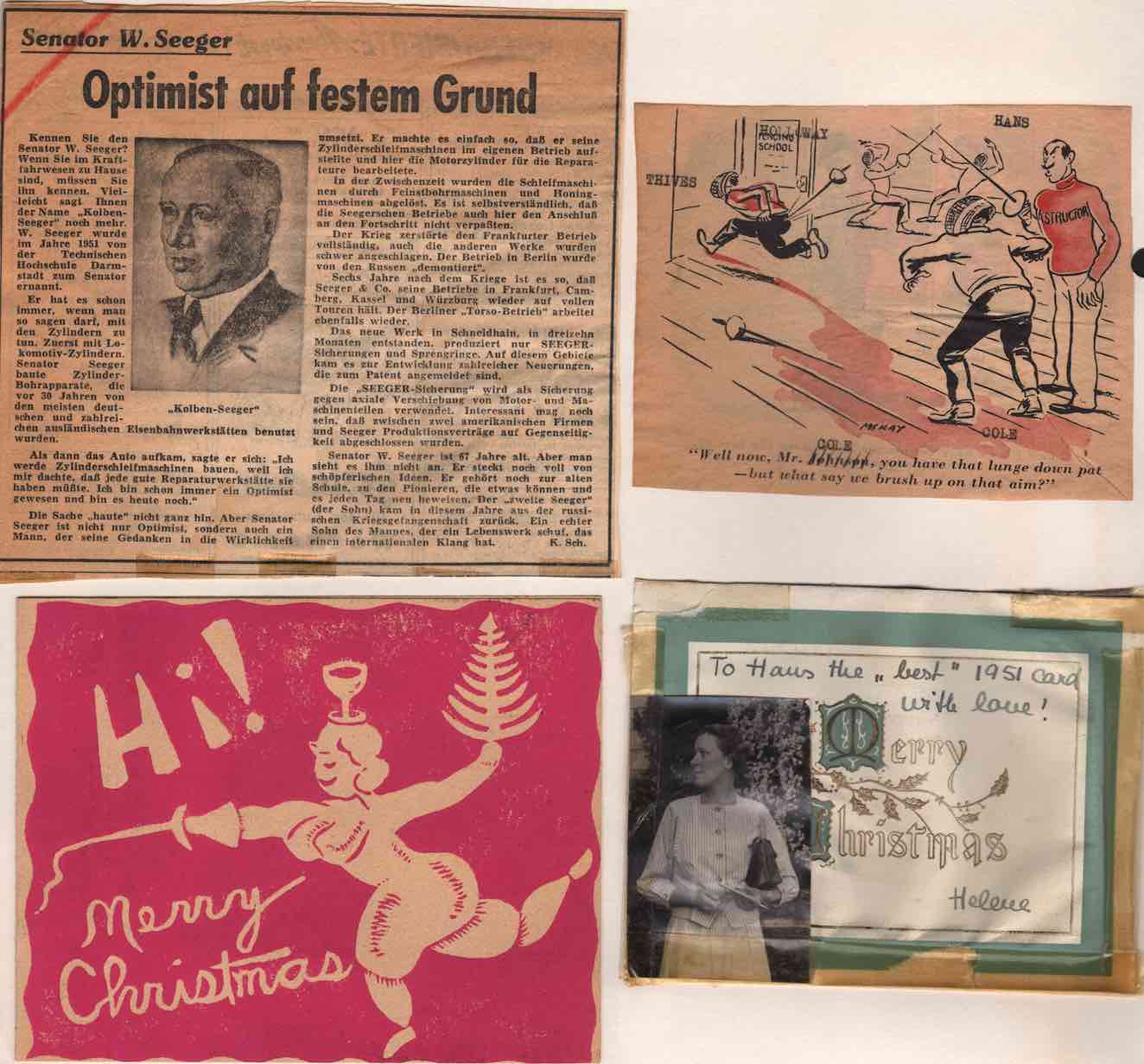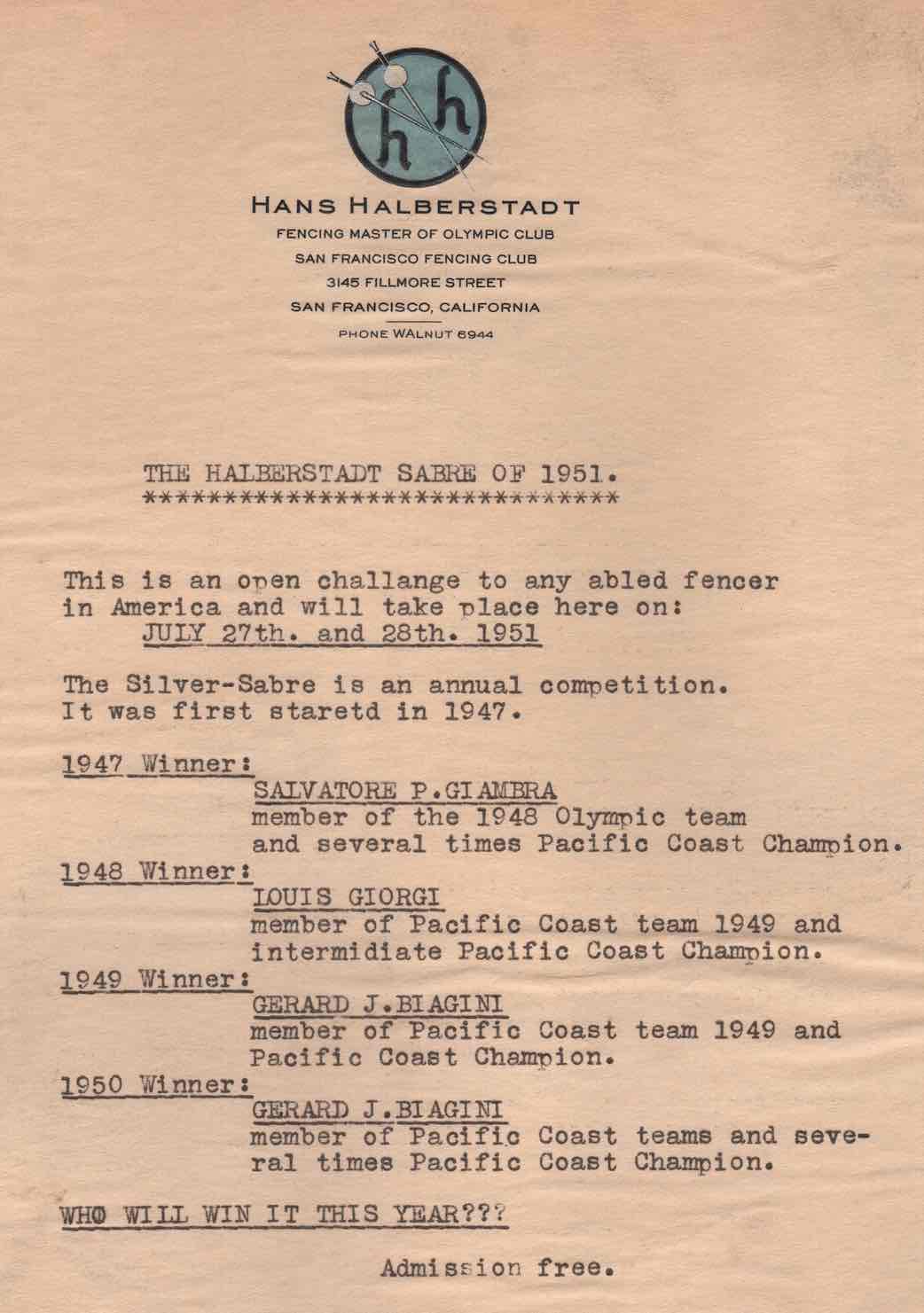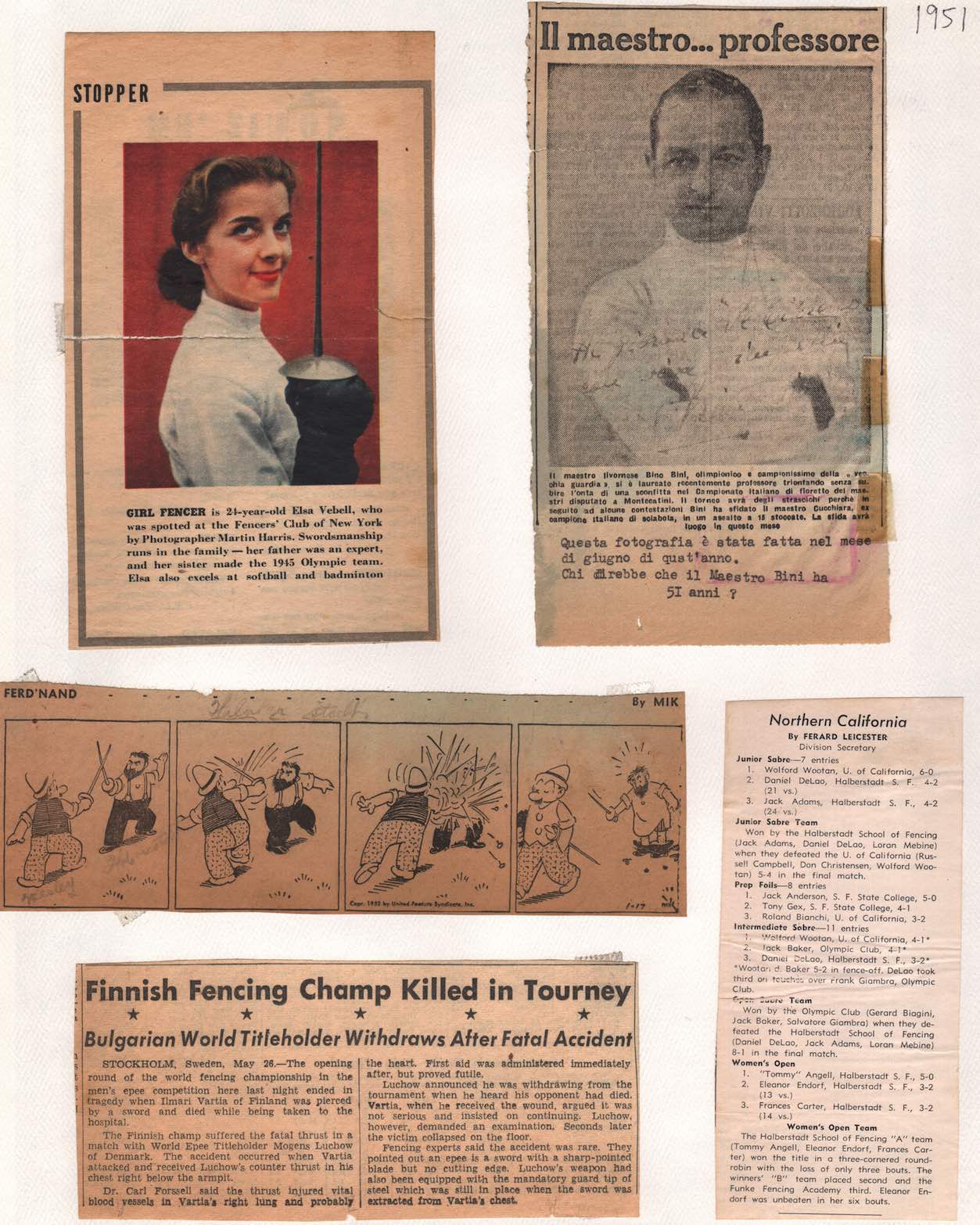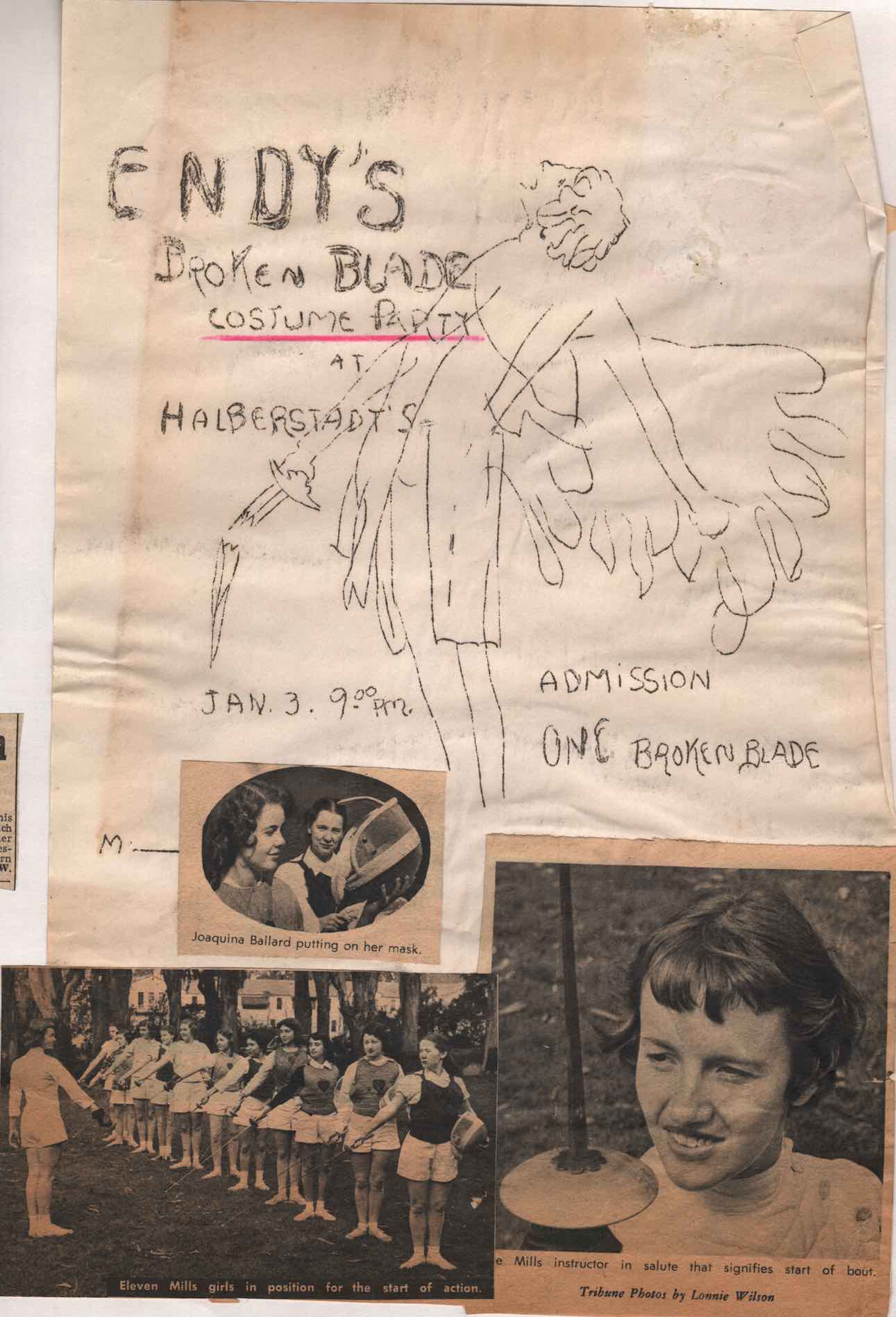As many times as I’ve mentioned the Halberstadt Scrapbooks on this website over the years, I was shocked to realize that I have not, until now, written a defining story about what they are and (to me, at least) their significance.
Today you can stop in at just about any hobby shop or Michael’s and find entire sections filled to overflowing with all manner of tools and materials to aid you in creating a masterfully designed and meticulously crafted scrapbook. In the olden days, you got a blank book and you taped or glued in your photos and news clippings and that was that. Well, that’s exactly what Hans Halberstadt did. Hans kept scrapbooks from 1948 or 1949 until his death in 1966. At least, that’s what we know of. In the first of his books, there are some very old papers from around 1900. From another long gone book? I’ll never know. If he had yet another from his earliest days in San Francisco, which started in January of 1940, it hasn’t survived to the present day. But sticking to the main subject, seventeen years of fencing history is quite a lot of ground to cover and Hans covered it extremely well.
A fairly standard page out of the Halberstadt Scrapbooks. This one is from 1949.
I don’t know how many newspapers Hans subscribed to but “a lot” has to be a pretty fair estimate. Along with the photographs, holiday cards and tournament programs that were slipped into the books, he has articles related to fencing from all over the country and around the world. He seems to have collected anything about fencing in all the San Francisco papers, an LA paper or two, several Midwest papers including two or three from Chicago alone, and at least the New York Times, if not another paper – or two – from NYC. He also has articles and clippings from Germany, Italy, France and Argentina. Then there are the magazine articles. And the good thing for me is that he often went out of his way, especially on the magazines, to be sure to include in the clipping the name of the publication and the issue number or date of publication. That information has allowed me to go off and hunt down copies of several magazines that had interesting articles so that I might have an original, as opposed to just a scan of a cut up little section. I’ve been able to get my hands on several rather obscure magazines with fencing articles for my own collection by using the clues Hans left behind and typing in the information into the search box on Ebay. Ah, Ebay. Bless you, Ebay.
Sportfolio, a magazine I’d never heard of prior to seeing the Halberstadt Scrapbooks. A great example of Hans leaving me enough clues to go find an original copy for myself. The May, 1949 issue of Sportfolio features Casey Stengel on the cover. That’s the top of his baseball cap you can see just below the magazine’s logo. Right at the end of the article you’ll even see a mention of Hans’ scrapbooks!
But let us not stop with blessing only Ebay, because many more thank-yous need to be spread around. The four scrapbooks now in existence at the Halberstadt Fencers Club are not the original books that Hans put together himself. Those original books were nearly lost in their entirety and the people that jumped in at the right moment to prevent that loss are my heroes forever. Back in the 1980s, on a dark day in the annals of fencing history, a water pipe burst at the Halberstadt club. Flooding ensued. I don’t know what else got drenched but the original Halberstadt Scrapbooks were among the victims. It is our great fortune today that the Halberstadt crew at the time recognized the value of the scrapbooks and immediately set to work with towels and hair dryers to soak up water and dry out the pages. That done, one of these heroes, Lee Bridges, set herself the task of re-assembling the articles, photos, etc, onto new scrapbook pages. She even went so far as to make notations where applicable to identify people in photographs, no doubt using the original books as a guide since some of the people she was able to identify were last seen at the club sometime before 1960.
Another example of a magazine clipping I was able to hunt down on Ebay. Although you can’t see the info here, this is from Flash: the Picture Digest, September, 1950 and features SoCal luminaries Ralph Faulkner, Polly Craus and Sewall “Skip” Shurtz.
The resulting work, however water-stained, discolored or smeared, still conveys an astonishing amount of history to be mined over and over again. I’m so grateful to Kathy Krusen at Halberstadt for entrusting the books to me for scanning. I made digital scans of all the material on each page, every page from every tournament program, and photographed anything that was too delicate to handle getting flattened on the scanner glass. I also made sure to come up with a naming convention based on page#/year that’s pretty easy to figure out – not terribly difficult since every page in the book was dated, making it easy to tell when 1958 changed over to 1959. (Thanks again, Lee!) The digital scans I then copied onto a couple of different hard drives for my backups and gave a copy of all the files to Kathy when I returned the books. The greater the spread of historical data means the greater likelihood of survival, right?
Italy, Chicago and the Bay Area, all on the same page. The top article from Italy describes a memorial tournament between French and Italian fencers, held in honor of the memory of the great Giulio Gaudini, the six foot, seven inch tall Olympic Foil Champion of 1936.
The interesting thing about how I’ve used my scans of the material is that it isn’t a straight read-through. My tendency is to have a topic or date range in mind for research and then go look through the pages until what I’m looking for pops up. What tends to happens though is that some new data point invariably comes along to inform my thinking of some other storyline on a totally different track. And after doing this type of research for better than six years now, every time I go back to the Halberstadt Scrapbooks, the more meaning I find. Some little article will have a name or something that didn’t mean anything to me the first time I saw it, but a year or two later that name will have been connected through other research and suddenly I’m making more sense of everything. It’ a fun, if sometimes puzzling, way to do research.
News from Germany, a hand-edited cartoon, and holiday greeting cards from the Funke’s and Helene Mayer, circa 1951.
Now I’m thinking I need to get my Excel on and start making a page-by-page spreadsheet of all the names and dates in all four books to make searching for information a much easier task. After, of course, spending a ton of time and effort sifting through every page. Huh. Just yesterday my son was asking me what the word was for doing a bunch of work now so that you can be lazy later. I told him to ask his English-major mother but now I think I need to find out what that word is, too. Is there even actually a word for that? It seems like there must be a word or phrase or something. Like, ‘ what people do, all day, every day’ or ‘that’s life’. It might be comforting to know.
The 1951 edition of the invitation to participate in the Halberstadt Sabre competition. For most of the years that this tournament was held, the invitation format stayed the same, listing all the previous winners and ending with the question of ‘who will win it this year?’ And I won’t leave you in suspense. Salvatore Giambra took the 1951 Halberstadt Sabre prize home and that trophy now resides in the Archive’s collection, thanks to a generous donation of memorabilia from Sal’s daughter.
One happy coincidence with these scrapbooks is the unexpected handoff of history between the starting point of the Halberstadt Scrapbooks and the ending point of the Erich Funke d’Egnuff scrapbook that is also part of the Archive collection. Funke’s scrapbook, a donation made by Marc LeRoux to whom I am eternally grateful, starts in 1934 and goes through 1947. Its coverage is more on the local level, encompassing a great deal of material from the Bay Area but less, percentage-wise, from other parts of the country. Still, between the two, I can reasonably expect to have information from any SF area competition (at least) from 1934 to 1966. Funke didn’t have a lot of competition in the form of other San Francisco clubs during his early times in the City. Hans had quite a bit more but never seems to have stinted on putting articles about other programs and coaches into his scrapbooks. If it was about fencing, it went in. Who knows what his personal feelings may have been about his local coaching competitors but if they got press, Hans cut it out and taped it into his book. I say ‘taped’ because the articles and photos in the scrapbooks as they are today tend to have a lot of old tape markings – and sometimes the old tape – on them. My suspicion is that Lee had to frequently make a choice about whether or not to tear off old tape, as the adhesive residue leads ultimately to paper deterioration. But that has to be balanced against potentially tearing the material when attempting to take off the tape. I’m glad she had to make those choices and not me. I’d still be working on it.
A 1951 page of miscellany with cartoons, a pretty fencer gal, Bino Bini and… a death-by-fencing notice? Not the only one of that last item to be found in the Scrapbooks, either. In this one, it references Mogens Luchow of Denmark, who was the World Epee Champion of 1950 and competed at the 1948 and 1952 Olympic Games. The victim was an Olympic competitor for Finland at the 1948 Games.
Going through the scrapbooks really does bring up some amazing moments in history. Hans carefully documented all the events of the arrival of the Hungarians to San Francisco in January of 1957 and the settling in the San Francisco Bay Area of George Piller, Dan Magay, George Domolky and Tom Orley from that group of world class athletes. There are also numerous pages devoted to the passing of the great Helene Mayer, an Olympic teammate and friend of Hans’ since she was in her teens. There are a number of pages from an Italian magazine reflecting on the passing of Aldo Nadi in 1965, just a year prior to Hans’ death. And throughout there are notices large and small about local tournaments, Pacific Coast Championships and Nationals. In almost every case where there is a program from a PCCs or Nationals, the names of the finalists and where they finished is filled out in Hans’ own hand. Another nice tidbit are the handbills from the annual tournaments, the Halberstadt Sabre and the Halberstadt Women’s Foil. Each year to advertise the upcoming event, Hans would include the names of all the previous winners, giving me an excellent record of to whom all the specially engraved and decorated sabres and foils went. (The Archive has 5 of the sabres and one of the foils, and I have seen 5 other of the sabre prizes. They’re each a little different and all very cool. Check out the new “Relics” feature on the website!) Greeting cards, telegrams, autographed restaurant menus, you name it, it’s all in there, year after year.
I’ve seen a couple of photos of masquerade parties taking place at the Halberstadt club back in the day. For this one, you had to pay an admission fee of a broken blade. “Endy” was the nickname for Eleanor Turney, a wonderful, generous woman and a fixture of NorCal fencing for decades. She gifted me my first lamé. By 1952, the date for this page, Mills College had lost their long-time fencing teacher, Helene Mayer. She had married and moved to Germany. I’m not certain who the woman is in the lower right who has taken Helene’s spot as instructor but that would be one tough act to follow.
That’s the story of the Halberstadt Scrapbooks. The Halberstadt club has them in their care. I don’t know if they keep them out for public perusal or store them safely away. But endless thanks to Kathy affording me the chance to scan them, so that I may share cool stories and images from the pages here to keep the information alive and moving forward.
Yikes. Another fencing death, this time from 1952 in Devon, England. Let’s not dwell on it. Norman Casmir was the son of Hans Halberstadt Olympic teammate Irwin Casmir.
Here at the end, let me say that I will just have to do more of these posts. I was going to try to provide some images that gave an overview of all four books in one go but that’s not going to work as there is just way too much interesting material in each book. Hence, the images here are all from Book One. I’ll dive into Book Two another time.


